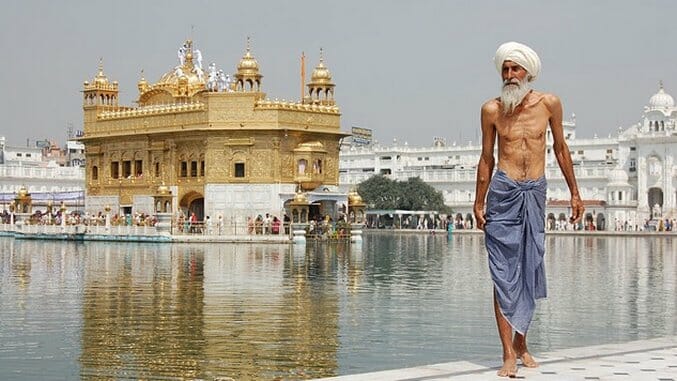
There are several reasons India impresses Westerners most. It’s a symbol of the exotic East. It’s jammed pack with people—soon to be the most populated country in the world in only the seventh largest area. It gave humanity two of its major religions, Hinduism and Buddhism. It’s home to the Taj Mahal, bengal tigers, Harmandir Sahib (pictured), the Sand Dunes of Rajasthan and Radhanagar Beach.
Here’s what you need to know to maximize your sanity while there:
1. You Will Be Overwhelmed
Most people, including locals, express this point with multiple exclamation points. So expect maddening crowds. Crushes of people. Sharp sounds and pungent smells. Hounding, break-your-heart but best-to-ignore child beggars. Sensory overload. Slumdog millionaire(s). “After India, other countries feel like they have the sound turned down,” writes Lonely Planet.
2. Don’t Drink The Water
As a foreigner, you’ll be advised to take a number of vaccinations before visiting. Even still, you probably get a harmless case of “Delhi belly,” upset stomach, or other digestive fun days. To minimize their occurrence, drink bottled water and avoid both tap water and ice, filtered or not. Also avoid street food. Never mind how tempting it looks. The short-lived excitement likely won’t justify the associated—albeit temporary—health risks. You’ve been warned.
3. Getting Around
Although English is the co-official language and widely used throughout the country, a few Hindi phrases will serve you well. For instance, namaskar (hello), shukriya (thank you) and kitna hai (how much?). When dining or tour guiding, tipping of about 10 percent is appreciated. For most visitors, rickshaws, taxis and long-distance trains are the preferred method of travel, as buses and short-distance trains are often criticized for overcrowding. To avoid being scammed, agree to a pre-paid rate at an official counter, never buy a ticket from a third party and politely decline insistent help from overly friendly strangers.
4. Stay Safe
India is, for the most part, safe. That said, there are some things you should know, starting with the State Department’s travel advisories. That goes for avoiding unstable areas, knowing popular scams and women being cautioned not to travel alone given the reported rise of assaults. Seasoned travelers recommend staying at reputable hotels, politely declining distracting or cheap offers, and covering your shoulders and legs, even though you’ll want to air them out in hotter parts of the country.
5. Finally, Do Visit
If I undersold India, it’s only because this complex, developing country deserves special attention. Some might disagree with the consensus guidelines cited above, but everyone agrees that India is largely worth the inconvenience. Best time to visit is October-March or July-September for the Himalayas. Jai hind!
Photo: Paulrudd, CC-BY
Off the Grid columnist Blake Snow writes epic stories for fancy publications and Fortune 500 companies. Follow him on Twitter.